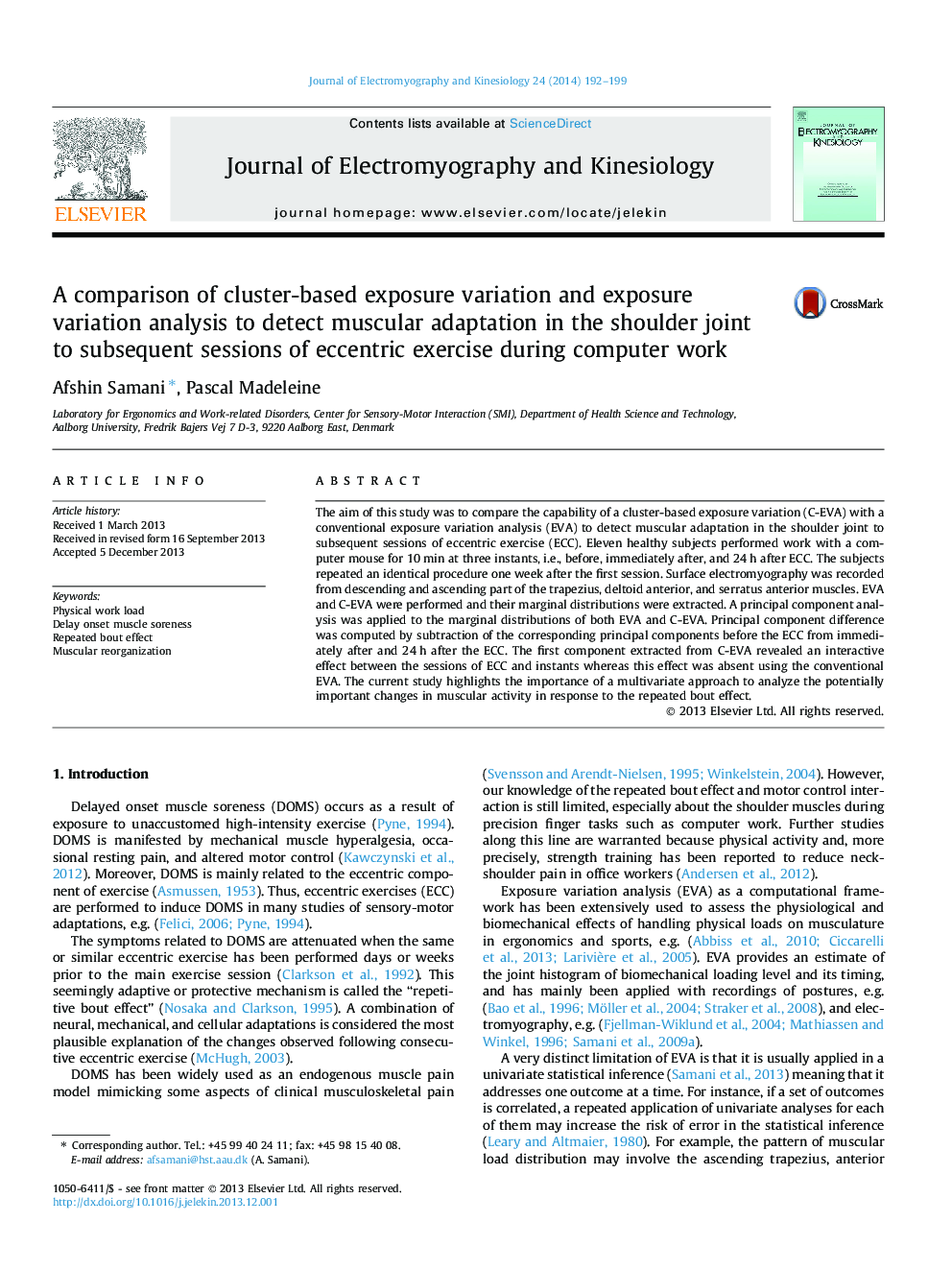| Article ID | Journal | Published Year | Pages | File Type |
|---|---|---|---|---|
| 4064653 | Journal of Electromyography and Kinesiology | 2014 | 8 Pages |
The aim of this study was to compare the capability of a cluster-based exposure variation (C-EVA) with a conventional exposure variation analysis (EVA) to detect muscular adaptation in the shoulder joint to subsequent sessions of eccentric exercise (ECC). Eleven healthy subjects performed work with a computer mouse for 10 min at three instants, i.e., before, immediately after, and 24 h after ECC. The subjects repeated an identical procedure one week after the first session. Surface electromyography was recorded from descending and ascending part of the trapezius, deltoid anterior, and serratus anterior muscles. EVA and C-EVA were performed and their marginal distributions were extracted. A principal component analysis was applied to the marginal distributions of both EVA and C-EVA. Principal component difference was computed by subtraction of the corresponding principal components before the ECC from immediately after and 24 h after the ECC. The first component extracted from C-EVA revealed an interactive effect between the sessions of ECC and instants whereas this effect was absent using the conventional EVA. The current study highlights the importance of a multivariate approach to analyze the potentially important changes in muscular activity in response to the repeated bout effect.
